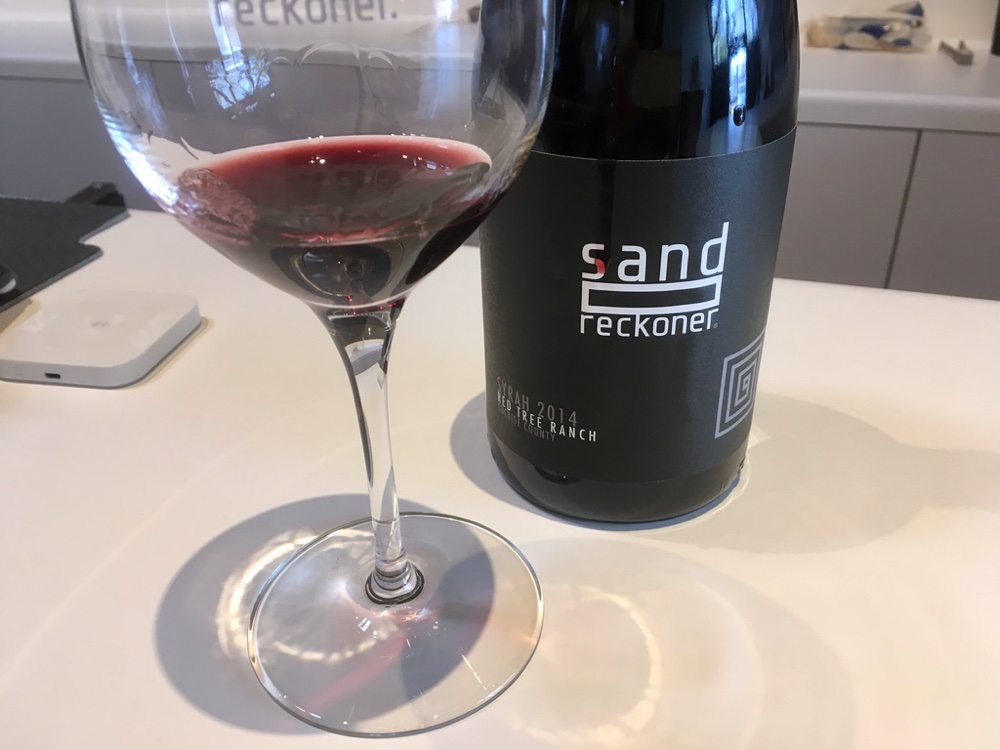
You might not think Arizona could make great wines – it’s a desert, after all – but that’s what people used to say about California wines, Canadian wines and hordes of other winemaking areas. And they were wrong.
Sarah Hammelman and her husband Rob were certainly believers in Arizona’s potential when they quit their day jobs and bought land to grow grapes an hour and a half east of Tucson.
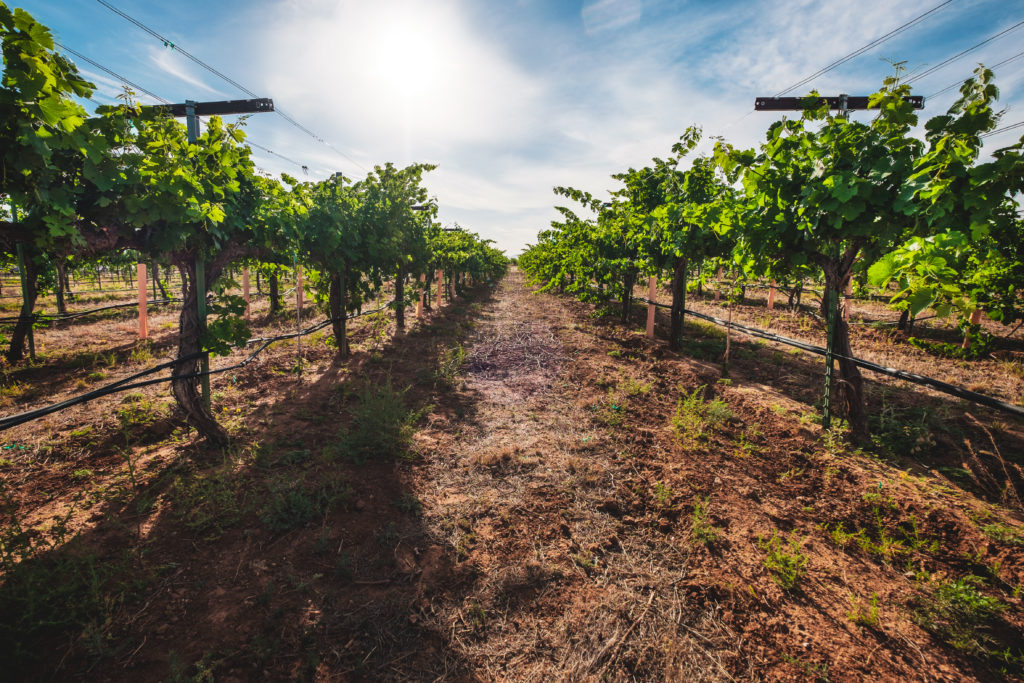
Sand-Reckoner Vineyards, with its granite, volcanic and limestone-studded sandy loam, sunny days, cold nights and almost 5,000 feet of elevation, makes crisp Vermentino, elegant and age-able Syrah and Orange Roussanne with hints of desert creosote and chamomile.
They harvested their first grapes in 2010, got their wines on 10 Phoenix restaurants’ wine lists by 2011 and paid off their personal loan in 2012. And with more Arizonans wanting to drink local, in 2017 they opened their first commercial outlet, the Sand-Reckoner Tasting Room in Tucson.
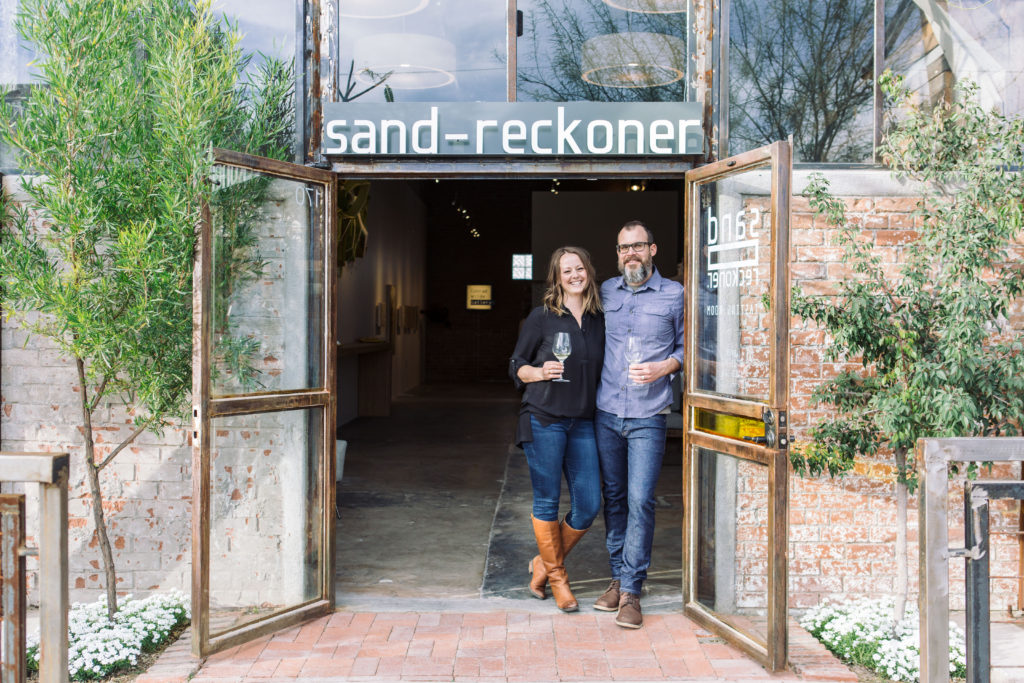
Photo credit: Grace Stufkosky
I spoke with Sarah Hammelman (and the Tasting Room’s exceptional server and wine bar snack food menu genius, Tana Fryer) about Arizona wine, launching the desert winery and her favourite places for a glass in Tucson.
Amie: How did you and Rob figure it was a good idea to open a winery in Arizona, a place known as a desert?
Sarah: We met while working at Two Rivers Winery in Colorado. Rob studied oenology and viticulture in Australia, but fell in love with an Arizona wine at Pizzeria Bianco that smelled like the desert. It was an Italian blend by Dos Cabezas WineWorks. We worked a harvest in France together and then moved to California. We looked for vineyards there, but the economy was bad. So we came to Arizona, where Rob’s mom lives.
It was a sort of turning point for Arizona wine. There were enough people before us making good wine. We found a three-acre vineyard southeast of Willcox, AZ, that had been planted in 1998 with Zinfandel, Syrah and Sangiovese. There was also an unusual white variety, Malvasia Bianca.
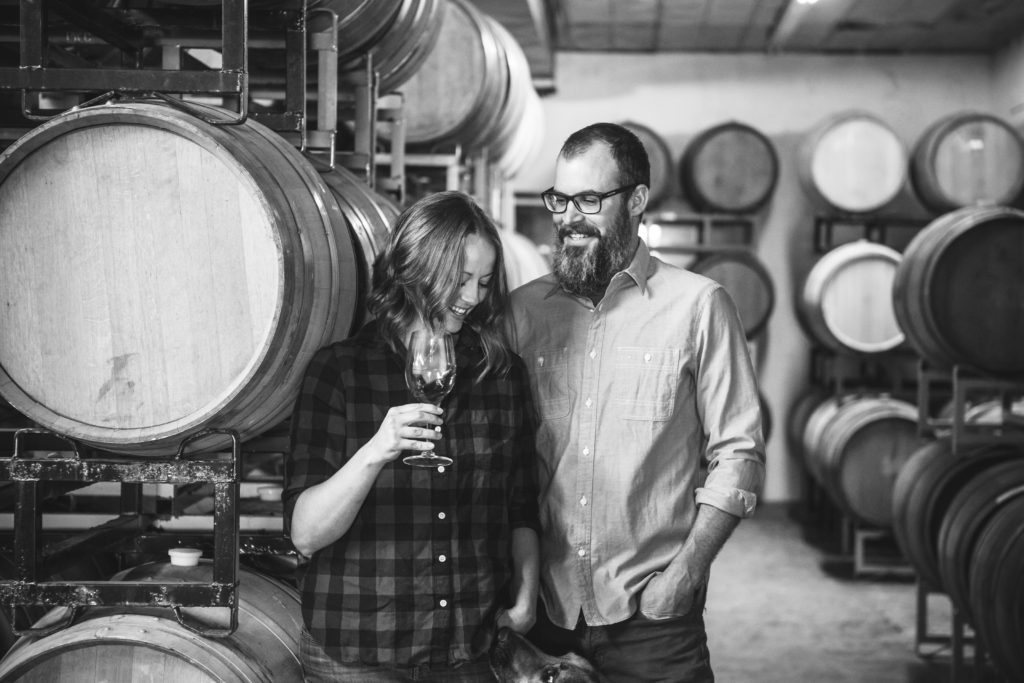
We were used to working with high desert vineyards and we liked that. We were drawn to Willcox because the soil is really great. There’s this special bench, The Willcox bench. It’s a couple miles long and high in the Sulphur Spring valley where grapes grow well. They don’t get frost. The soil is pretty much perfect. As the mountains around us have eroded, you get different fingers of soil types. So we have two pockets of clay, but it’s mostly sandy loam. With the clay you have to be specific and hopeful, because with the monsoons, that clay-based soil can hold the water and be bad for the ripening. The sandy soil drains the monsoons down and it’s really great.
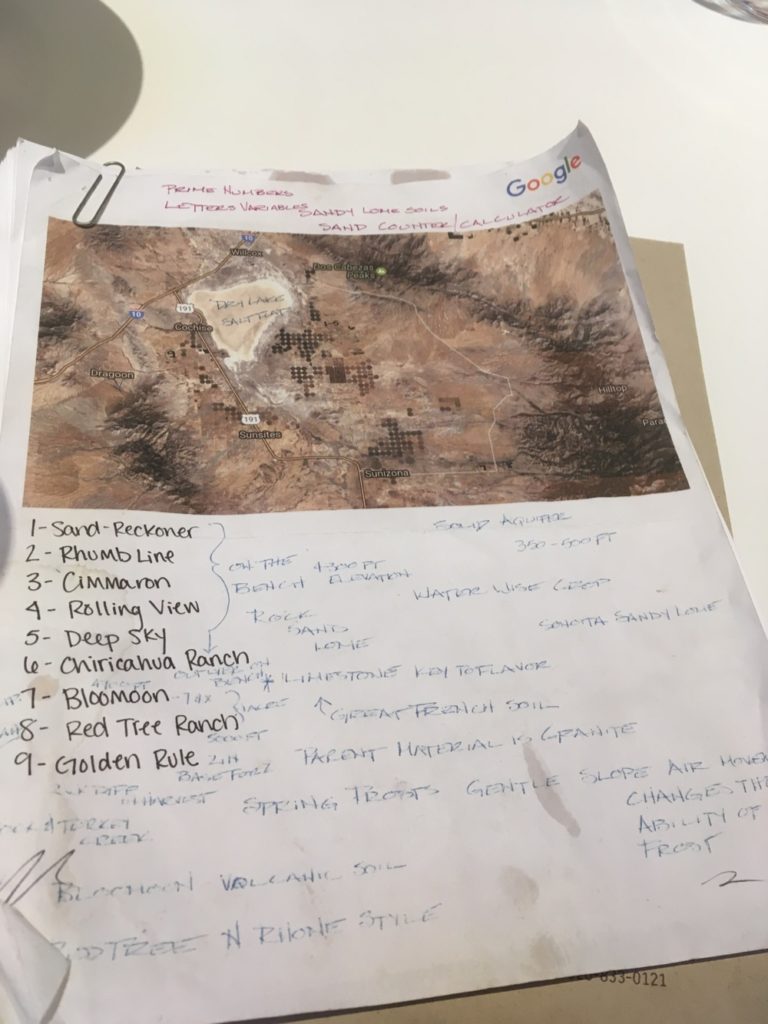
Amie: Do you make the wine right on the property?
Sarah: We crafted our wines at a downtown Willcox storefront that used to house a hardware store and auto garage. The winery doesn’t have much machinery; lifts are operated by hand. We started making wine just from grapes from our vineyard. We just made the wine off of our 3.5 acres. It was 400 cases. Rob and I were doing the vineyard work and the winery work and then we had to sell it.
Over the summer we usually have one person part-time and Rob and I full-time in the vineyard full-time for a month or so.
Amie: Now you’ve expanded to working with and buying grapes from nearby vineyards to supplement your own. Can you tell me a bit more about the different soils where your grapes come from?
Sarah: Rhumb line is Sonoita sandy loam and McAllister loam, which I think has a little bit more clay to it.
The Chiracahuas, which is the range to the east of us, was formed by a volcano. So we have granite erosion from the mountains because of the volcano and limestone subsoils because we were once under water. Then, as water flows, it moves clay more.
Bloomoon is an organically farmed vineyard. It’s the owners’ love project.
And Red Tree Ranch is a one-acre Syrah vineyard.
Tana: It feels much more like collaborative projects with the vineyards than just buying grapes. It’s much more of a symbiotic relationship.
Why use so many Italian varieties of grapes? Do they grow well here?
Sarah: We find that Italian varietals in general do really well. We’d drank Malvasia in the past but never made it. Never made Nebbiolo or Sangiovese. We went into it with a minimalist attitude. No new oak. Rob had never made rosé before. They made the Nebbiolo into a rosé because it was light in colour.
Amie: The Zinfandel has a huge dried fig flavour. This is the one for people who like California Zin. Why didn’t you want to make a Zinfandel rosé? It seems as though it’d be an easy sell.
Sarah: We can’t make a rose out of Zinfandel because the acid is so high at the lower brix. It does have lovely acid, but we do have to get it up to a higher brix to balance it so it’s not too acidic.
Amie: How do you manage pests? Do you have to spray?
Sarah: With the elevation and the heat and cold winters, we have very low pest pressure. During the monsoons we spend a lot of time in the vineyard. June is just positioning the canopies, so the humid air from the monsoons don’t sit around the grapes and facilitate rot. We’ve never had rot in the vineyard. I think Rob sprayed once in 2018 for pests. And we do organic spray, we do Stylet oil. We don’t do herbicides, because we live there in the house. The only bug we’ve had is a Grapeleaf skeletonizer and we can spray another organic spray for that.
Amie: How do you keep the soil healthy?
Sarah: We have nitrogen-poor soil, so we have had to use synthetic nitrogen in the fall to help the soil recover from the harvest. I’ve been doing reading and following a lot of biodynamic practices. Oregon is kind of the hub for it in the States, but it’s so lush there and very different, so it’s not a practical application, some of those things. They have nettles growing wild and we’d have to bring them in and is that responsible because they’re invasive? I think there’s a way to do it that blends biodynamic ethos. We have native farming that’s been happening here for such a long time. I think we can build something.
We submitted an application to work on cover cropping with native tepary beans, Sonoran white wheat, cow peas and some other things to help build up the biomass and help reduce soil erosion and grow beneficial plants.
We’re also trying to work with wines where we don’t have to add anything. With a nitrogen-poor soil, the grapes tend to be poor in nitrogen as well. To keep the yeast happy sometimes we have to add some nutrients to the ferment. But the Picpoul, for example, is a beautiful varietal that doesn’t need anything at all. I really like Sangiovese from our area. It’s low pH. It’s makes a nice balanced wine.
We respect natural winemakers immensely, but we’re still a small producer and to do a native, wild ferment is risky. Losing a whole vat of wine would be a disaster. If a wine needs to be racked, then we rack it, but if it’s smelling good, we leave it alone. We filter the whites so they’re a little more stable, but they’re vegan. Rob and I are vegetarian. We don’t filter the orange Roussanne and we never filter the reds. We try to do careful barrel management so the sediment stays down.
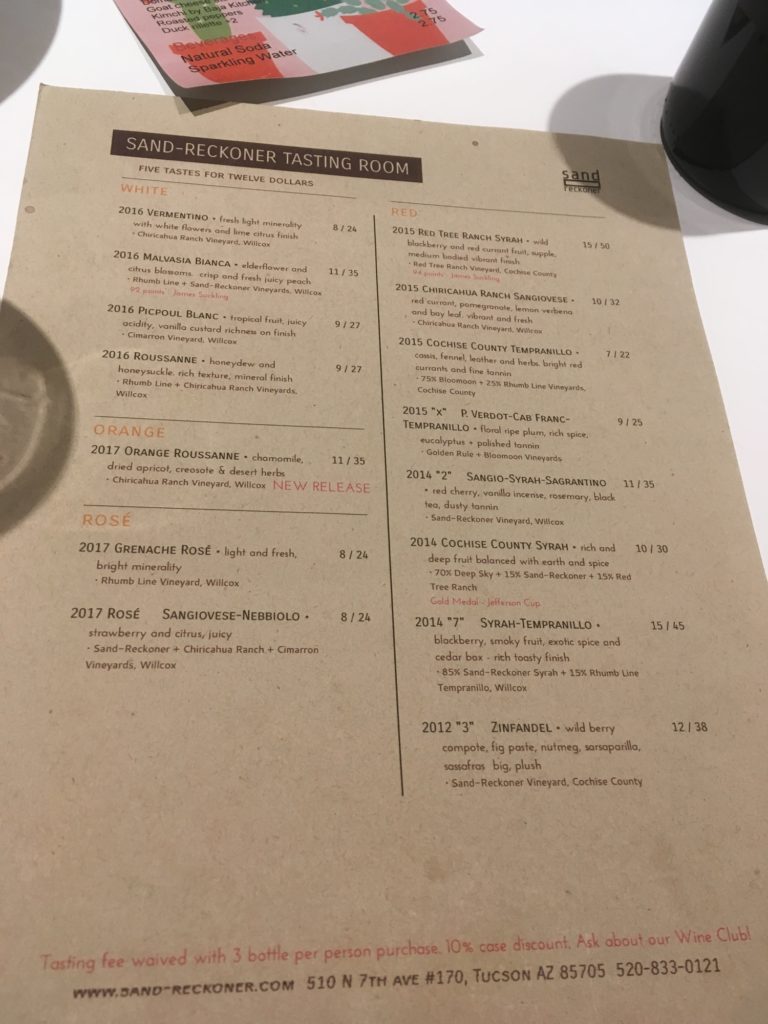
Amie: Can you walk me through your wines?
Sarah: Definitely! This is the Picpoul Blanc. It’s from Cimarron, a vineyard 40 acres south of us. The 2015, we did it mostly in stainless steel because we knew it has that pucker characteristic. I think the 2016 is a blend of stainless and neutral oak. And the neutral oak rounded it out and gave it a really custardy texture. Its good with white fish and scallops.
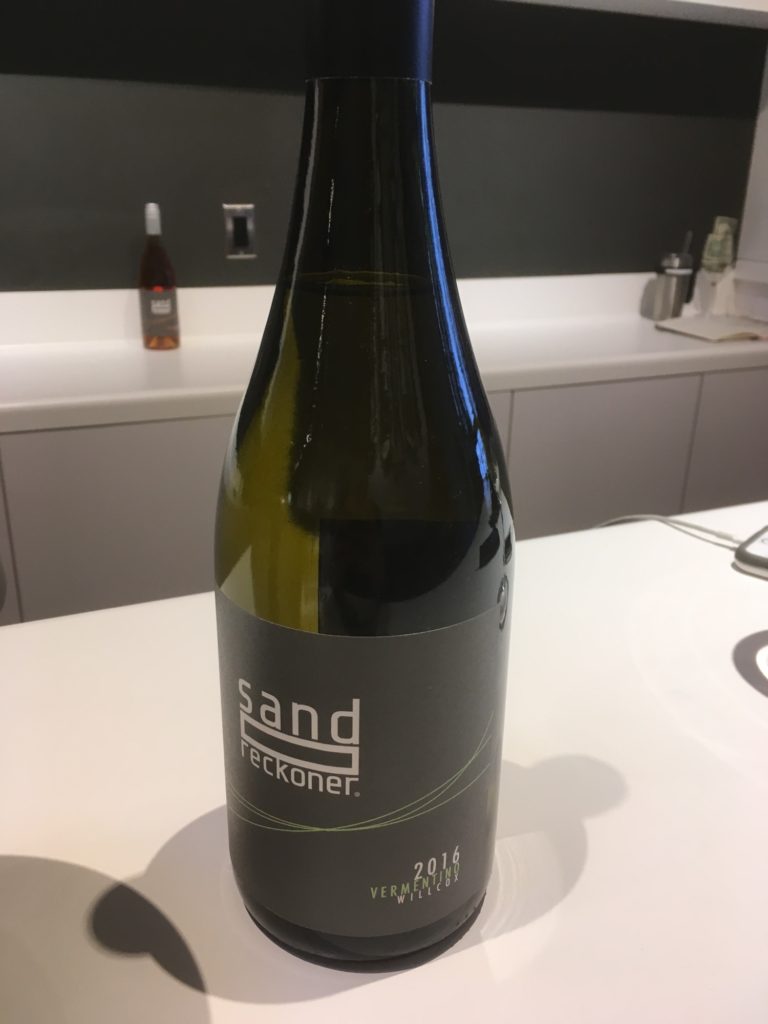
The Vermentino is 13%. 2015 was a colder year so more acidity, so maybe 12.5%. There’s zero residual sugar. I like with salads and fresh, raw green veggies. The idea being that it’s a wine that can be enjoyed by itself but is very enjoyable with food. A lot of the whites and the rosé are very good on their own.
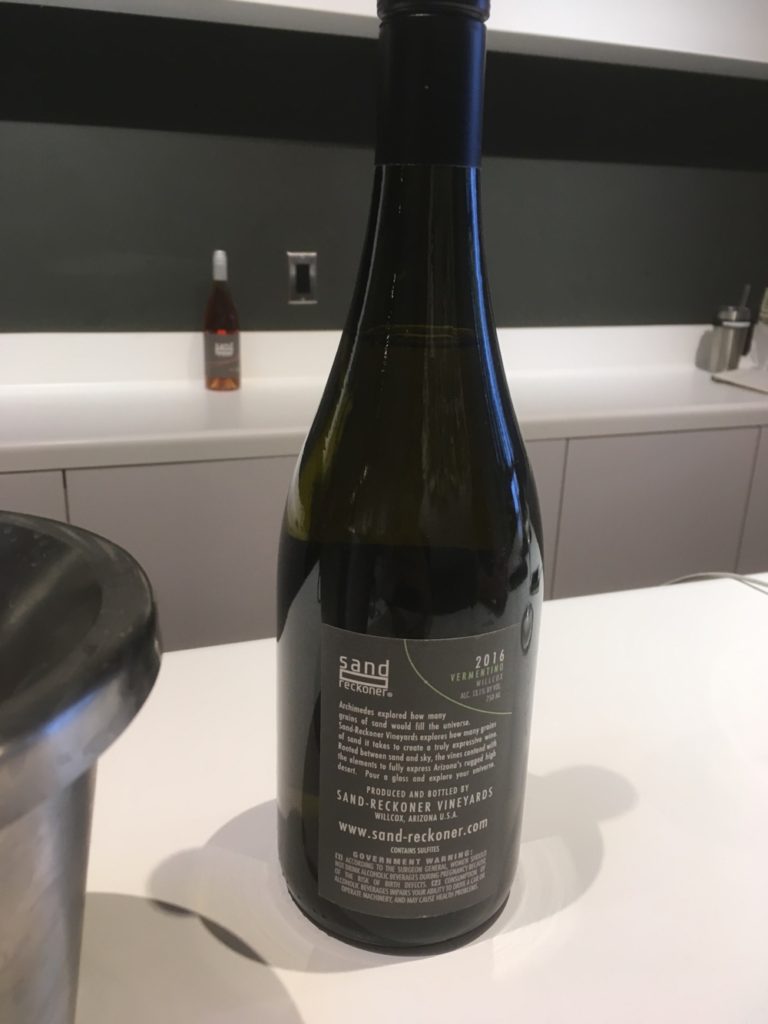
Amie: The Malvasia has this big nose of flowers and is soft in the mouth. The bitterness at the end makes you want another sip. What do you drink that with?
Sarah: Again, salads. Lemon, olive oil, salt and pepper. Nothing too acidic to fight it.
Amie: I know this isn’t supposed to affect the wines, but what grows nearby your vineyard?
Sarah: Pecans, cotton, corn, alfalfa and chilies. I think the desert soil is very different from Willcox to Sonoita. I taste the difference. It’s a very iron-rich soil in Sonoita. It’s a natural grassland where we’re more of a shrub desert. You get more rich iron in Sonoita and for us it’s more limestone-y.
Amie: What about your orange wine?
Sarah: We made the the orange Roussanne in 2016 for the first time. We get roussanne from two vineyards. The Chiracahua Ranch vineyard and Rhumb Line Vineyard. They’re very full clusters at Rhumb Line. Medium-size. And the Roussanne from Chiracahua Ranch was looser clusters and as they were ripening they were getting kind of amber. It must be a clonal difference because temperanillo is very clonal specific. The Spanish clone and Portuguese clone we work with are night and day different grapes. So they’re just developing those natural colours.
We also made a sparkling Malvasia pet nat [pétillant naturel, a bottle-fermented sparkling wine]. That will be released in Spring 2019. We haven’t disgorged it yet. It’ll be released over eight months and we’ll do several different disgorgements.
Amie: Pet Nats are big right now. Why’d you decide to do one of those instead of a Méthode Champegnoise sparkling wine?
Sarah: We like the idea of bottling it and leaving it. We don’t have the resources for the proper riddling and the labour in disgorging and dosing for a true Champagne style. So it’s kind of a Méthode Ancestrale style where we let it finish in the bottle. And we have to disgorge it because the Malvasia is so lees-heavy that we just need to get them out of there.
Amie: Is the Grenache rosé another new addition?
Sarah: We did a Sangiovese rosé last year, in 2017, but this is the first time we’ve made the Grenache rosé. We had Grenache available from the Rhumb Line vineyard. Our rosé has always been based off the Sangiovese or Nebbiolo from our vineyard. Those are big grapes, so it’s always been a medium-bodied rosé. We liked the idea of making a lighter style and the Grenache is much more soft.
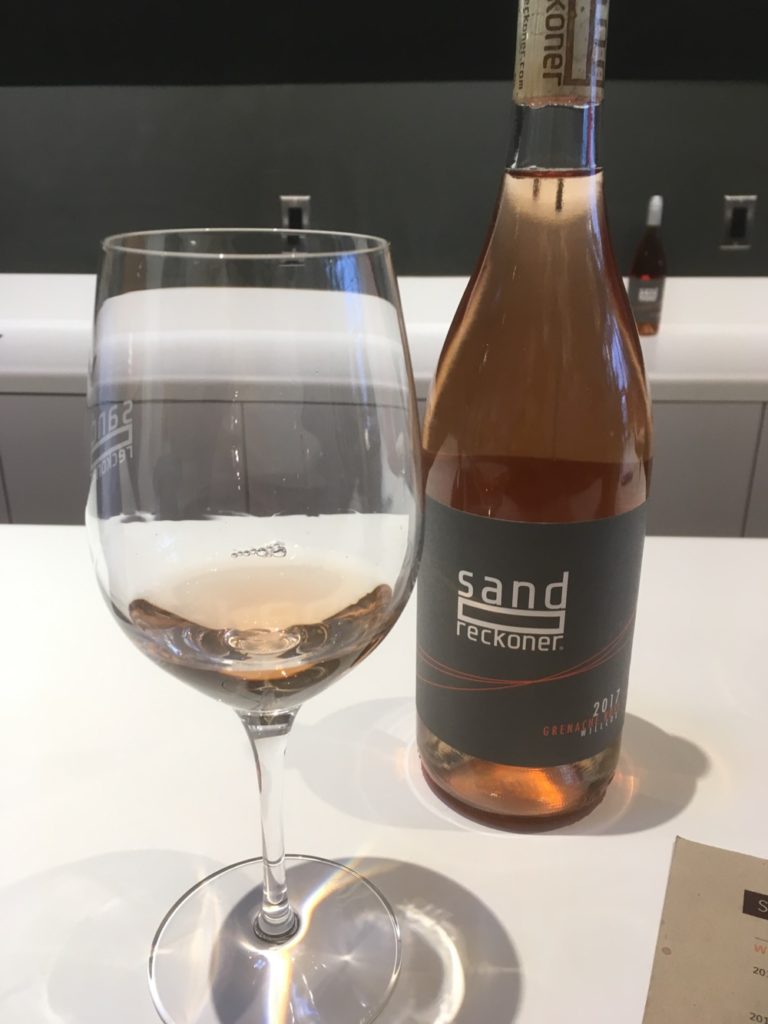
Amie: Is it a sweet rosé or dry?
Sarah: It’s zero residual sugar. We didn’t want a sweet rosé. We’re going to make the ones we like – the southern Rhone styles of rosé.
Amie: What are the secrets to making great wine in a desert? What makes these Syrahs and Sangiovese so juicy without being fruit bombs?
Sarah: We usually have a couple days in the summer where it gets to 100˚F. How we balance is there’s usually a good swing, down into the 70s at night. So, cool nights and cool mornings and canopy management is huge.
You can be standing in a row and stick your hand inside that canopy and it can be 10 degrees cooler. The canopies create a microclimate and keep them cooler. There’s a lot of different philosophies that we see as we go through the vineyards, but ours is dappled light, full canopy.
There’s thin skin on the Zinfandel to make thin clusters so there’s no rot, because Zin is tricky for rot. We prune from the north side, so there’s air flow. And any south fruit is under the cover of leaves.
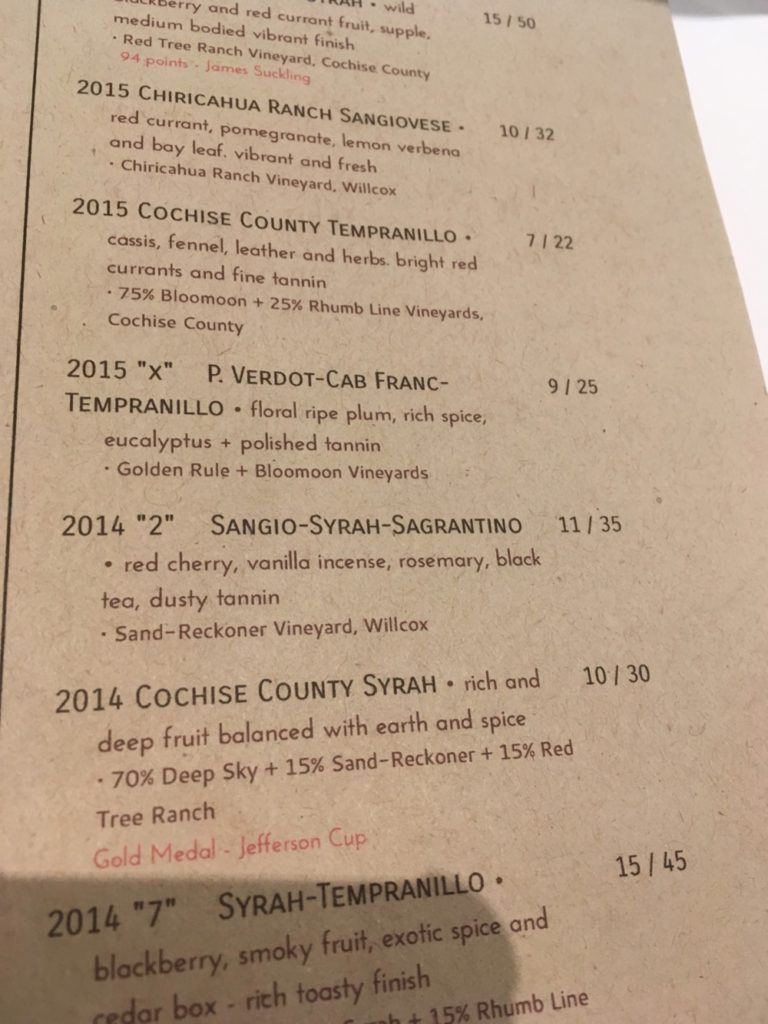
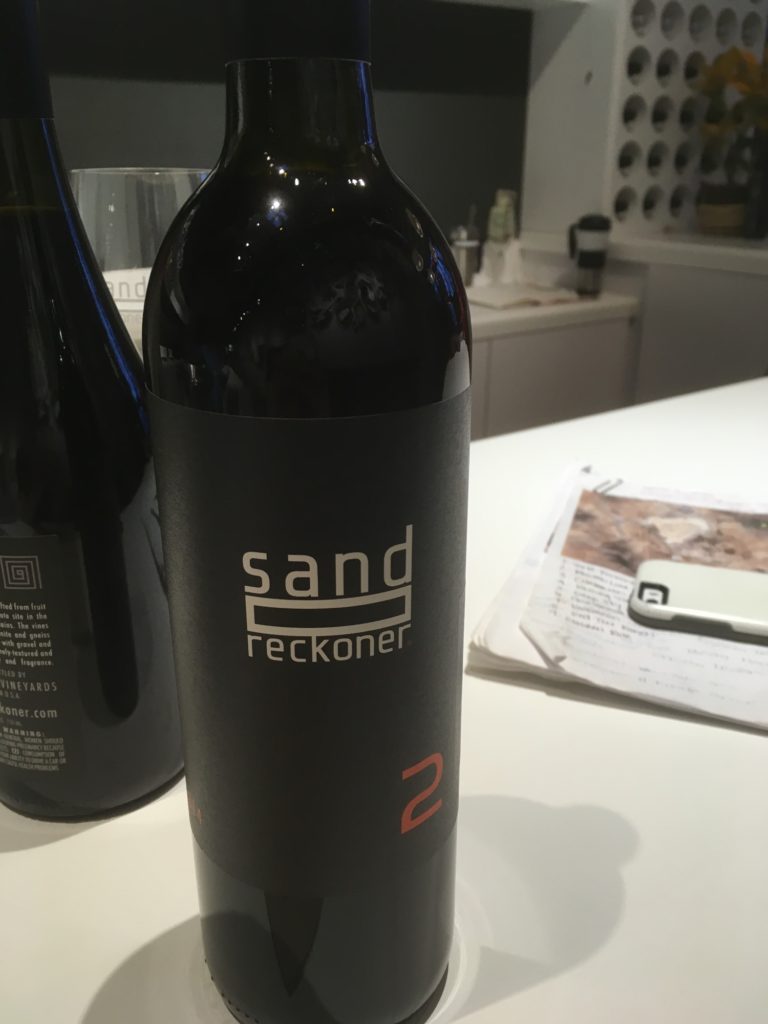
Amie: I’m a little in love with your red blends. How do they get that beautiful colour?
Sarah: Twenty-four hours on the skins of the Nebbiolo for the rosé and it picks up some tannin. It’s a light colour. We press the Sangiovese right away so it doesn’t get too dark. It tastes sweet in the mouth from the Nebbiolo, but it’s more tannins and zero residual sweetness.
Amie: Fake sweet. Syrah is another changeling depending on where its grown. What happens when you grow Syrah at 5,000 feet of elevation like you do?
Sarah: It’s a very different Syrah because of the elevation and soil. It’s definitely more mineral, herbal, blackberry, even blackberry seeds.
Amie: The “7” is beautiful. It’s so soft. Is it high alcohol? There’s a big fruit flavour but it’s not bombastic.
Sarah: It’s 14.5% alcohol and maybe 20% new french oak.

Amie: Where can people find your wines?
Sarah: Tap & Bottle, Time Market, Kingfisher, Augustine Kitchen, Reilly’s, Good Oak. At restaurants we mainly sell our Rhone-style white blend and our red blend. Hermano’s carries our red blend, which we sell through our distributor. Plaza Liquors has some. The distributor carries about five of our wines. Maynards Restaurant has a house wine made by Sand-Reckoner.
We do have a keg program through our distributors and they keg it and deliver it to those places. So sometimes it’s on tap at Tap & Bottle and Reilly’s.
Amie: What’s in the future for Sand-Reckoner Vineyards?
Sarah: We’ve outgrown our winery, so we’re looking to expand in the next year or so. We want to make wine more of a conversation piece in Tucson. We’ve had a really wonderful reception and support here, but I feel there’s a lot of room for talking about Arizona wine in Tucson. The city has done such a good job here of embracing craft beverage.
In five years, we’d like to have more national distribution for sure.
Amie: Is Arizona wine world class?
Sarah: Willcox has an AVA [American Viticultural Area designation] now. We got that 2016. It helps. Santa Cruz has one and the Sonoita area has had one for awhile. We want Arizona wine to compete on the world stage. These wines are not novelty. They can stand on their own. In ten years, it’ll be further along. But now you’ve got to focus on the hearts and minds of Arizonans. A lot of people who live here have come here from other places.
Amie: What are the busiest days at the tasting room doing in downtown Tucson?
Sarah: Friday and Saturday are the biggest. And Wednesdays we see people travelling.
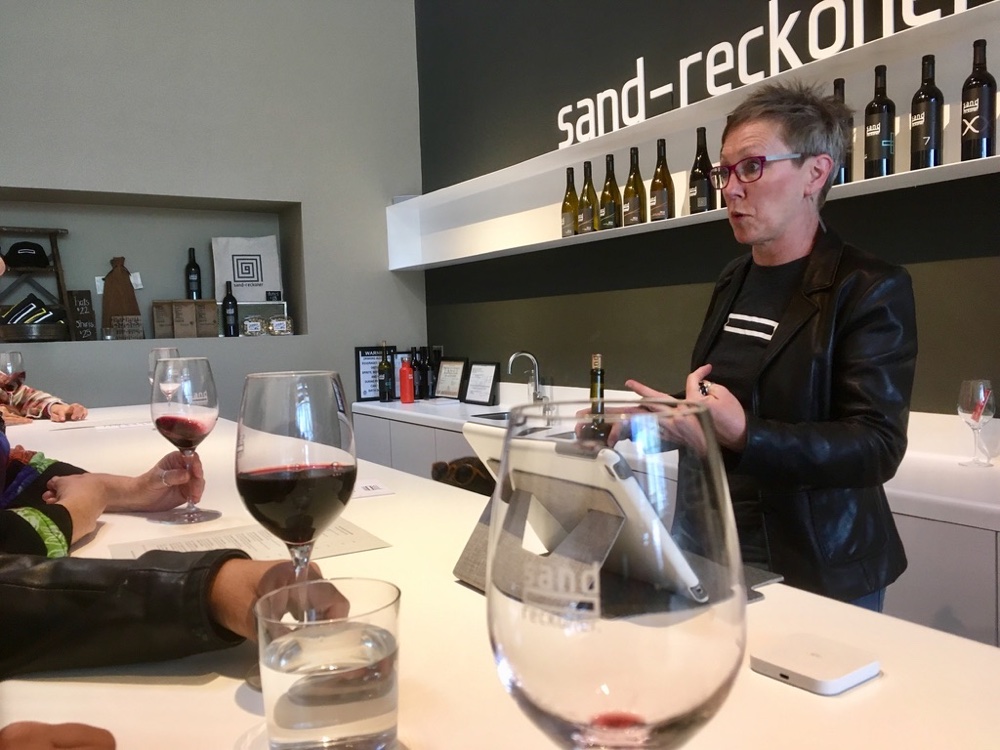
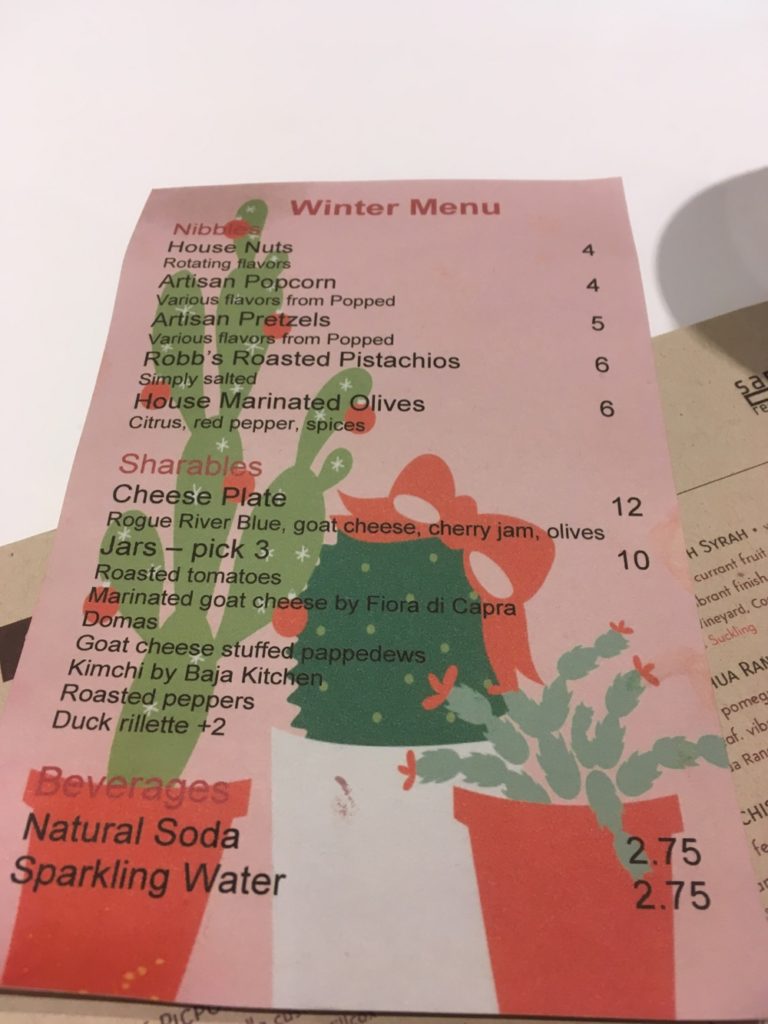
Amie: Who’s behind the snacks menu?
Sarah: Tana does all the cheese. She had a shop at the Mercado. She also marinates some of the olives, like the rosemary ones.
Amie: You’re vegetarian, but you have these big red wines, which are stereotypically paired with steak and red meat. What do you eat with them?
Sarah: We like the veggie sausages with the first half of the red wine menu and the bottom half is stewed mushrooms. My husband started making a French onion soup with miso and vegemite instead of beef broth. And lentil meatballs.
To buy Sand-Reckoner’s wine: Go to the tasting room or order online. A lot is sold out online. Restaurants generally only have the white and red blend, so I’d recommend a tasting at the Tasting Room, then just buy the bottles you love the most. If you don’t plan on visiting Tucson soon, you should.
Sand-Reckoner Vineyards
Tasting Room:
510 N 7th Ave #170, Tucson, AZ
Phone: 520-833-0121
Hours: Wed-Thurs, Sun 1-8pm, Fri-Sat 1-9pm
Leave a Reply